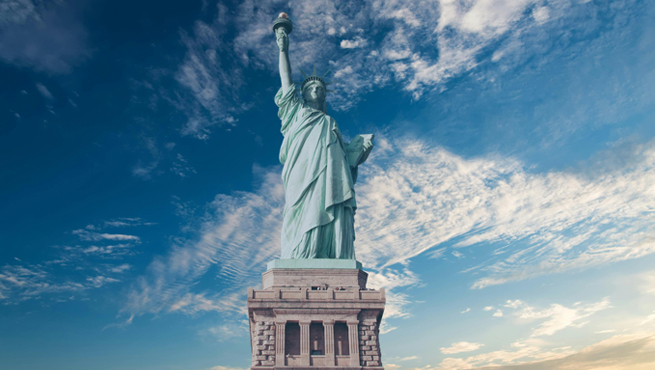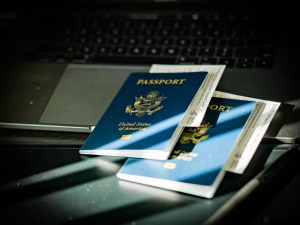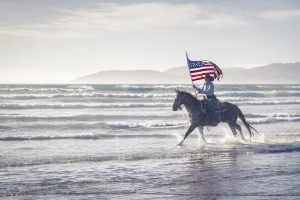Table of Contents
- Top 10 Reasons for USA Visa Rejection Including Visa Interview
- How to Check Your USA Visa Rejection Status?
- USA Visa Rejection Refund
- What Should I Do After USA Visa Rejection?
- Guide to Appealing Your USA Visa Rejection
- Guide to File New Application (Reapplication) After a Hong Kong Visa Rejection
- Why Choose OneVasco?
- Frequently Asked Questions
The United States, with its diverse attractions and opportunities, attracts thousands of Indian travelers annually. However, USA visa rejections for Indians creates a concern for many. While this popular destination offers endless possibilities, securing a visa requires careful attention to documentation and meticulous preparation to ensure application success.
Top 10 Reasons for USA Visa Rejection Including Visa Interview
1. Application Timings
The timing of your visa application is crucial due to long wait times at U.S. consulates in India. The appointment wait times for B1/B2 visas vary significantly by location:
- New Delhi: 432 days
- Mumbai: 427 days
- Hyderabad: 435 days
- Kolkata: 499 days
- Chennai: 486 days
Processing times after your interview are typically:
- Standard Processing: 3-5 business days after the interview
- Expedited Processing: Available only in genuine emergencies (medical, death in family, etc.) and must be approved by the consulate
Given these extended wait times, it’s crucial to plan your U.S. travel well in advance. The U.S. Embassy recommends initiating the application process at least 12-15 months before your intended travel date.
2. Incomplete Application Form
The main form for a USA tourist visa is the DS-160 (Online Nonimmigrant Visa Application). Here are key points about this form:
- It’s an online form that must be filled out digitally.
- After submitting, you need to print the confirmation page for your interview.
- The form is quite detailed and can take 1-2 hours to complete.
- You must answer all questions truthfully and completely.
Common mistakes that lead to rejection:
- Leaving sections blank
- Providing inconsistent information
- Making spelling errors in crucial fields like name or passport number
3. Visa Interview Gone Wrong
The visa interview is a critical part of the USA tourist visa application process. Here’s what you need to know:
- Interviews are mandatory for most Indian applicants aged 14-79.
- They usually last about 3-5 minutes.
- Interviews are conducted in English at US Embassies or Consulates in India.
Common interview questions:
- What is the purpose of your trip to the USA?
- How long do you plan to stay?
- Where will you be staying?
- Who will you be visiting?
- How will you fund your trip?
Tips to avoid interview-related rejection:
- Be honest and consistent with your answers
- Speak clearly and confidently
- Dress professionally
- Bring all required documents
4. Lack of Ties with Home Country
This is one of the most common reasons for USA tourist visa rejections for Indians. The visa officer needs to be convinced that you will return to India after your trip. Here’s how to show strong ties:
- Provide proof of current employment (offer letter, salary slips)
- Show property ownership documents
- Provide bank statements showing regular income
- Bring documents showing family ties (marriage certificate, children’s birth certificates)
- Show evidence of future commitments in India (job contract, university admission)
Remember, the stronger your ties to India, the higher your chances of visa approval.
5. Insufficient Funds
You must prove that you can afford your trip to the USA. While there’s no fixed amount required, you should have enough to cover all expenses. Here’s what you need to know:
- Bring bank statements for the last 6 months
- Show a steady income source
- If someone else is sponsoring your trip, bring their financial documents and an invitation letter
- The amount should match your travel plans (e.g., longer stays require more funds)
Tip:
There isn’t an exact amount set by U.S. authorities, but it’s important to show that you have enough money to support yourself during your trip. A common recommendation is to have about $150 to $200 for each day you plan to stay. This amount should cover things like where you’ll stay, meals, travel, and other daily expenses. However, everyone’s situation is different, so it’s a good idea to plan based on your own travel needs and budget.
6. Insufficient Travel Insurance
While travel insurance is not mandatory for a USA tourist visa, having it can strengthen your application. It shows that you’re a responsible traveler. Here’s what to consider:
- Choose a policy that covers medical emergencies and trip cancellations
- Make sure the coverage is valid for the entire duration of your planned stay
- Keep a copy of your insurance policy with your visa application documents
7. Overstaying a Previous Visa
If you’ve overstayed on any previous US visa or visit, it can lead to rejection of your current application. Here are the consequences:
- Overstaying a U.S. visa by under 180 days doesn’t trigger a re-entry bar, but it does violate immigration laws. This can hurt future visa chances, as consular officers may see it as non-compliance. It’s important to explain and document the overstay when reapplying.
- Overstaying by 180 days to 1 year: You may be barred for 3 years.
- Leaving the U.S. after over a year of unlawful presence can result in a 10-year entry ban.
If you’ve overstayed before, be prepared to explain the circumstances during your interview.
8. Unfavorable Home Country Conditions
While this isn’t directly in your control, unfavorable conditions in India can sometimes lead to visa rejections. This could include:
- High unemployment rates
- Political instability
- Economic crisis
To counter this:
- Focus on your personal circumstances rather than general country conditions
- Show strong ties to India and reasons to return
- Provide a clear and legitimate purpose for your USA visit
9. False Information on Visa Applications
Providing false information is a serious offense and will almost certainly lead to visa rejection. This includes:
- Lying about your travel history
- Falsifying financial documents
- Misrepresenting your purpose of travel
Always be honest in your application and during the interview. If caught, you may be permanently barred from entering the USA.
10. Records in the Destination
Having certain records in the USA can lead to visa rejection:
- Criminal record in the USA
- Previous visa violations or deportations
- Overstaying on a previous visit
If you have any such records, be prepared to explain them during your interview. In some cases, you may need to apply for a waiver of ineligibility.
By understanding these common reasons for USA tourist visa rejections, you can better prepare your application. Remember, the key is to prove that you’re a genuine tourist with strong ties to India and no intention of overstaying or working illegally in the USA.
With the present USA tourist visa rejection rate, a careful preparation and honest responses will increase your chances of a successful visa application.
How to Check Your USA Visa Rejection Status?
- Visit the U.S. Department of State’s CEAC status check tool online.
- Enter your CEAC barcode or case number from your visa application.
- Click “Check Status” to view your current application status.
For a detailed guide on how to check your visa status and what to do if your application is rejected, check out our comprehensive article on [USA Visa Status Check]
USA Visa Rejection Refund
The visa application fee for U.S. visas is non-refundable, regardless of the outcome of your application. This fee covers the cost of processing your application and is not dependent on whether your visa is approved or denied. Even if your application is rejected, you will not receive a refund of the application fee.
What Should I Do After USA Visa Rejection?
After receiving a US visa rejection under Section 214(b) or other grounds, you can either request for a waiver (in specific cases) or submit a new application. The approach depends heavily on your rejection reason and visa category applied for.
- B1/B2 Tourist Visa: Commonly rejected for insufficient ties to home country or weak financial proof
- F1 Student Visa: Often refused due to unclear academic goals or intent to return issues
- H1B Work Visa: Typically rejected for qualification mismatches or incomplete LCA documentation
- K1 Fiancé Visa: Usually denied for inadequate relationship evidence or income requirements
- E2 Investor Visa: Most rejections due to insufficient investment documentation or business plan
Guide to Appealing Your USA Visa Rejection
Understanding the options after a USA visa refusal is important for planning your next steps. Here’s what to know:
- No Appeal for B1/B2 Visa Denials: If your B1/B2 visa is denied, there is no formal appeal process. Instead, you may reapply by submitting a new application and paying the fees again.
- Address the Denial Reasons: In your new application, make sure to clearly address the reasons why your visa was denied. This can improve your chances of getting approved.
- Form I-290B: This form is only for appealing or filing a motion on certain decisions made by USCIS, but it does not apply to B1/B2 visa denials.
Read our blog on “Understanding USA Visa Rejection Appeals and Waivers” to learn about your options after a visa denial. Our expert guide details which rejections can be appealed, waiver eligibility criteria, and strategies that have helped applicants overcome visa denials.
Guide to File New Application (Reapplication) After a USA Visa Rejection
Read our blog on “Reapplying for US Visa: Strategic Approach Guide” to understand how to strengthen your new application. Our comprehensive guide covers addressing 214(b) concerns, building stronger ties evidence, and timing considerations that have helped applicants secure approval on subsequent attempts.
Why Choose OneVasco?
OneVasco makes visa applications effortless. Our expert team manages the entire process, allowing you to focus on your journey.
Enjoy stress-free travel with fast visa approvals.
- Expert and Personalized Support
- Efficient and Hassle-Free Process
- Real-Time Tracking and Updates
- Transparent Communication
- Trusted by Millions
Frequently Asked Questions
Q1: What are the common reasons for USA visa rejection for Indians?
USA visa rejections commonly occur due to insufficient home ties, inadequate funds, incomplete applications, unclear travel purpose, or previous visa violations.
Q2: Does a previous USA visa rejection affect future applications for Indians?
Previous rejections can impact future applications, but addressing original issues and showing significant circumstantial changes improves approval chances.
Q3: Can I reapply after a USA visa rejection?
You can reapply after rejection with no limit on applications, but ensure all previous rejection reasons are properly addressed first.
Q4: How long should I wait to reapply after my USA visa rejection?
While there’s no mandatory waiting period, wait 3-6 months before reapplying to gather stronger evidence and improve your profile.
Q5: Is there a USA visa appeal process?
There’s no formal appeal process; decisions are final, though procedural errors can be reviewed. Reapplication with stronger documentation is recommended.
Q6: How much bank balance is required for a USA visa?
No specific minimum balance is required, but maintaining $10,000–$15,000 in your account, along with demonstrating stable income and assets, is favorable to avoid USA Visa rejection for Indians.
Disclaimer: The information provided here is for general guidance. Visa regulations can change, so it’s always a good idea to check the official USA immigration website or consult with a professional for the most current information.





















